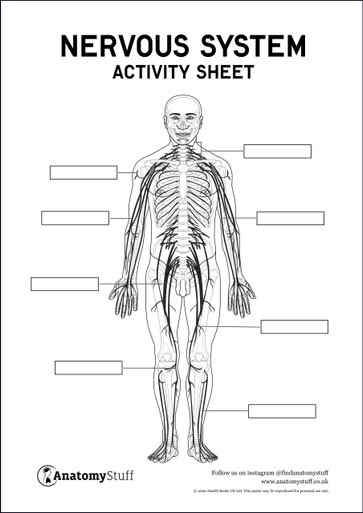Written by: Liz Paton, MSc
Nervous System Overview
Our bodies are made up of an incredibly complex system of “electrical wiring” composed of nerves and neurons that send signals from different parts of our bodies to our brain. Without the nervous system, we would not be able to do any of the actions required to live.
Nervous System Anatomy
The nervous system allows different parts of the body to communicate with each other. It is made up of the brain, spinal cord, our sensory organs and the trillions of nerves. It plays a major role in controlling homeostasis, which is the process of maintaining a relatively stable internal state despite changes in the environment. The nervous system is broken into two subdivisions called the central nervous system and the peripheral nervous system.
Central Nervous System
The central nervous system (CNS) consists of the brain and spinal cord. The CNS controls sensory input, information processing and motor output.
Peripheral Nervous System
The peripheral nervous system (PNS) consists of the nerves that branch out from the spinal cord. It consists of afferent and efferent neurons. The afferent division controls sensory and visceral stimuli. The efferent division is a bit more complicated, and branches off to the somatic nervous system and autonomic nervous system.
Autonomic Nervous System
The autonomic nervous system controls body processes automatically. It regulates bodily functions such as heart rate, digestion and blood pressure. The autonomic nervous system branches off into the sympathetic nervous system (SNS) and the parasympathetic nervous system (PNS).
Sympathetic Nervous System
The sympathetic nervous system is activated by the hypothalamus by sending signals to the adrenal glands through the autonomic nerves. The SNS deals with situations that require immediate reaction and triggers the “fight or flight” response. If you find yourself alert in a dangerous or stressful situation, this is your sympathetic nervous system at work, increasing your heart rate and sending blood to your muscles to help you react.
Parasympathetic Nervous System
The parasympathetic nervous system is the division of the autonomic nervous system that deals with conserving energy and is often referred to as the “rest and digest” system. The parasympathetic system saves your energy as it slows down your heart rate and increases the digestion process.
Sensory Organs
The five sensory organs include the eyes, ears, nose, tongue and skin which allow us to see, hear smell, taste and touch, respectively. These organs work with the help of sensory neurons that send impulses to our CNS which then allows our brain to respond.
Free Download PDFs
View AllRelated Products
View All













